SEBA Class 7 Science Chapter 5 Electric Current and Its Effects – Textbook Solutions & MCQ (Part II)
Find Class 7 Science Chapter 5 “Electric Current and Its Effects” Solutions for SEBA Assam (English Medium) students. This chapter, from Part II of the Science book, explains electric circuits, heating and magnetic effects of electric current, and safety precautions while using electricity. It covers electromagnets, fuses, circuit diagrams, and working of electric components like bulbs, switches, and solenoids. Our solutions provide detailed textbook answers, multiple-choice questions (MCQs), and clear concept explanations to enhance learning and help in exam preparation.
Class 7 Science
Chapter – 5 (Part II) Ospin Academy
Electric Current and Its Effects
EXERCISE
Q.1. Draw in your notebook the symbols to represent the following components of electrical circuits: Connecting wires, Switch in the ‘OFF’ position, Bulb, Cell, Switch in the ‘ON’ position and Battery.
Ans: Draw in your notebook the symbols to represent the following components of electrical circuits:
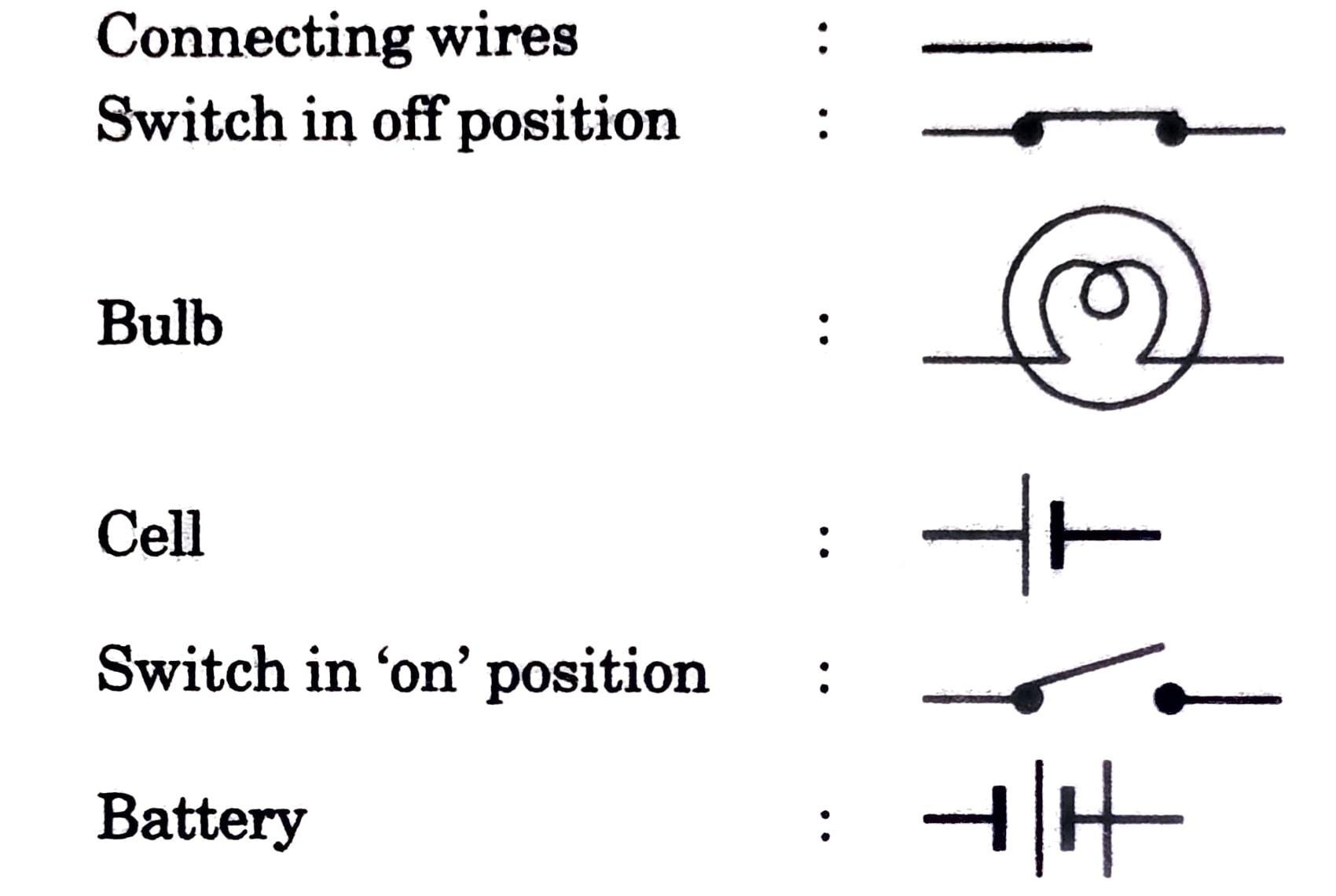
Q. 2 Draw the circuit diagram to represent the circuit shown in Fig. 14.21.
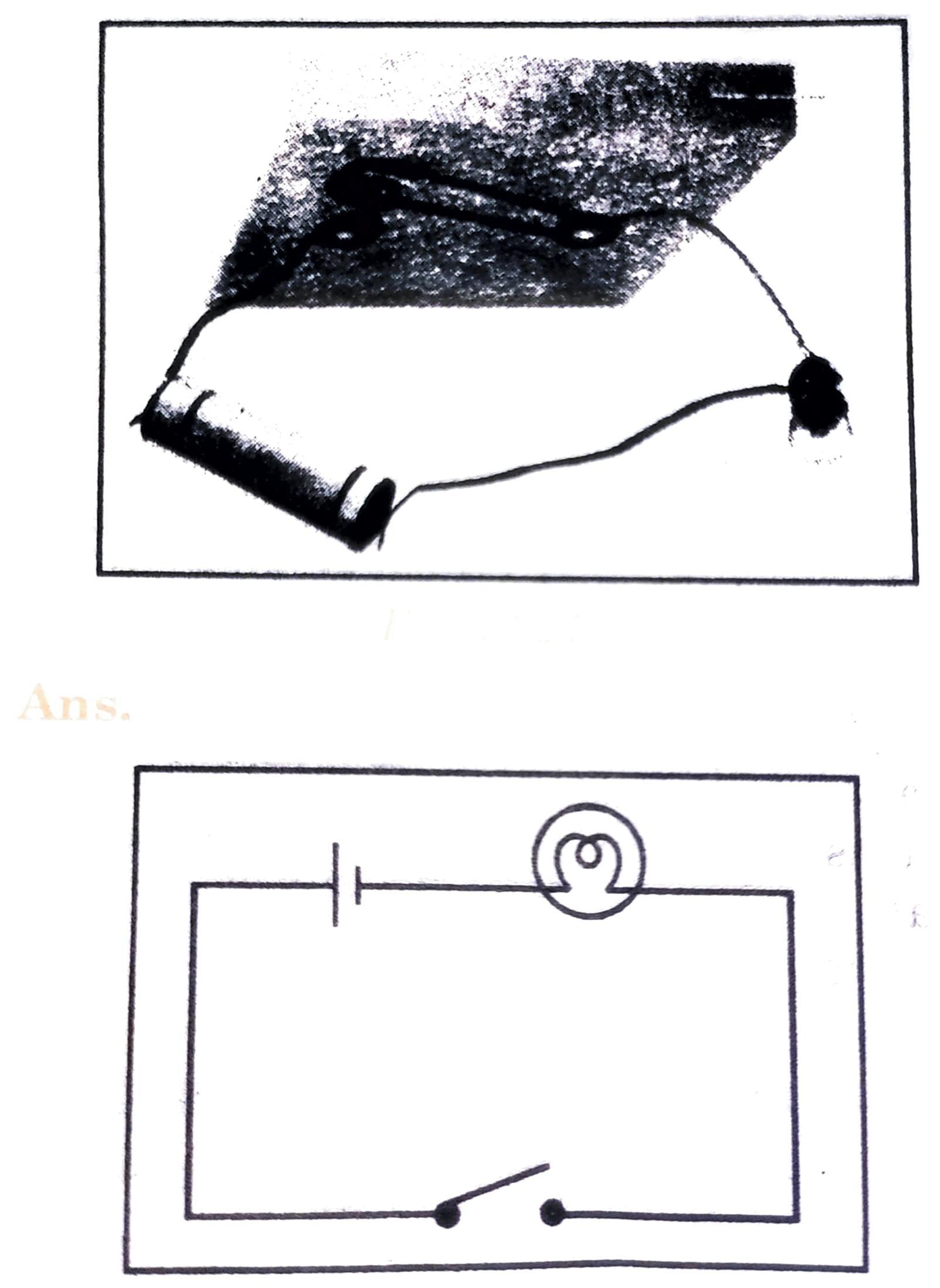
Fig. 14.22.
Q. 3. Fig. 14.23 shows four cells fixed on a board. Draw lines to indicate how you will connect their terminals with wires to make a battery of four cells.
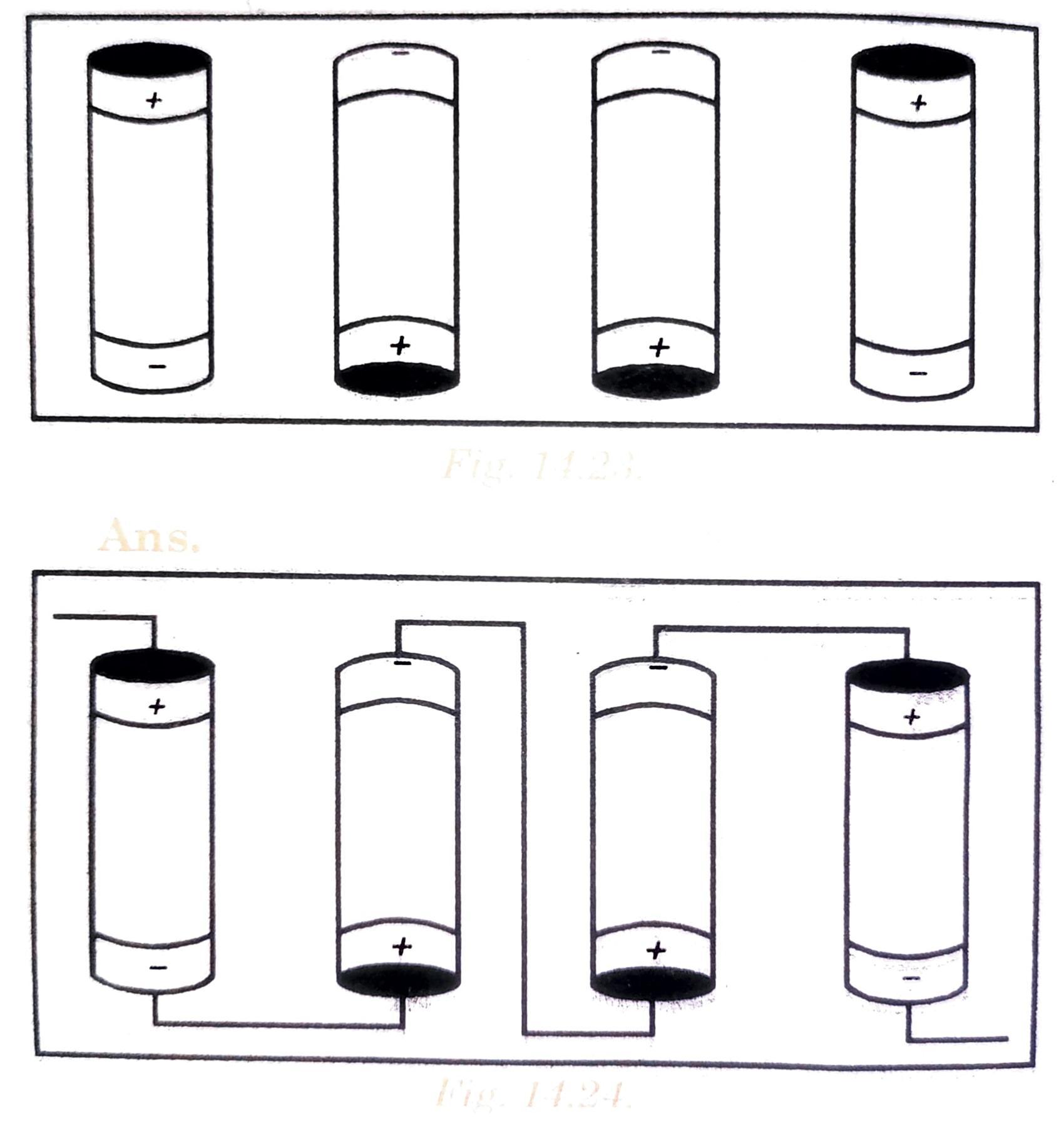
Q. 4. The bulb in the circuit shown in Fig. 14.25 does not glow. Can you identify the problem? Make necessary changes in the circuit to make the bulb glow.
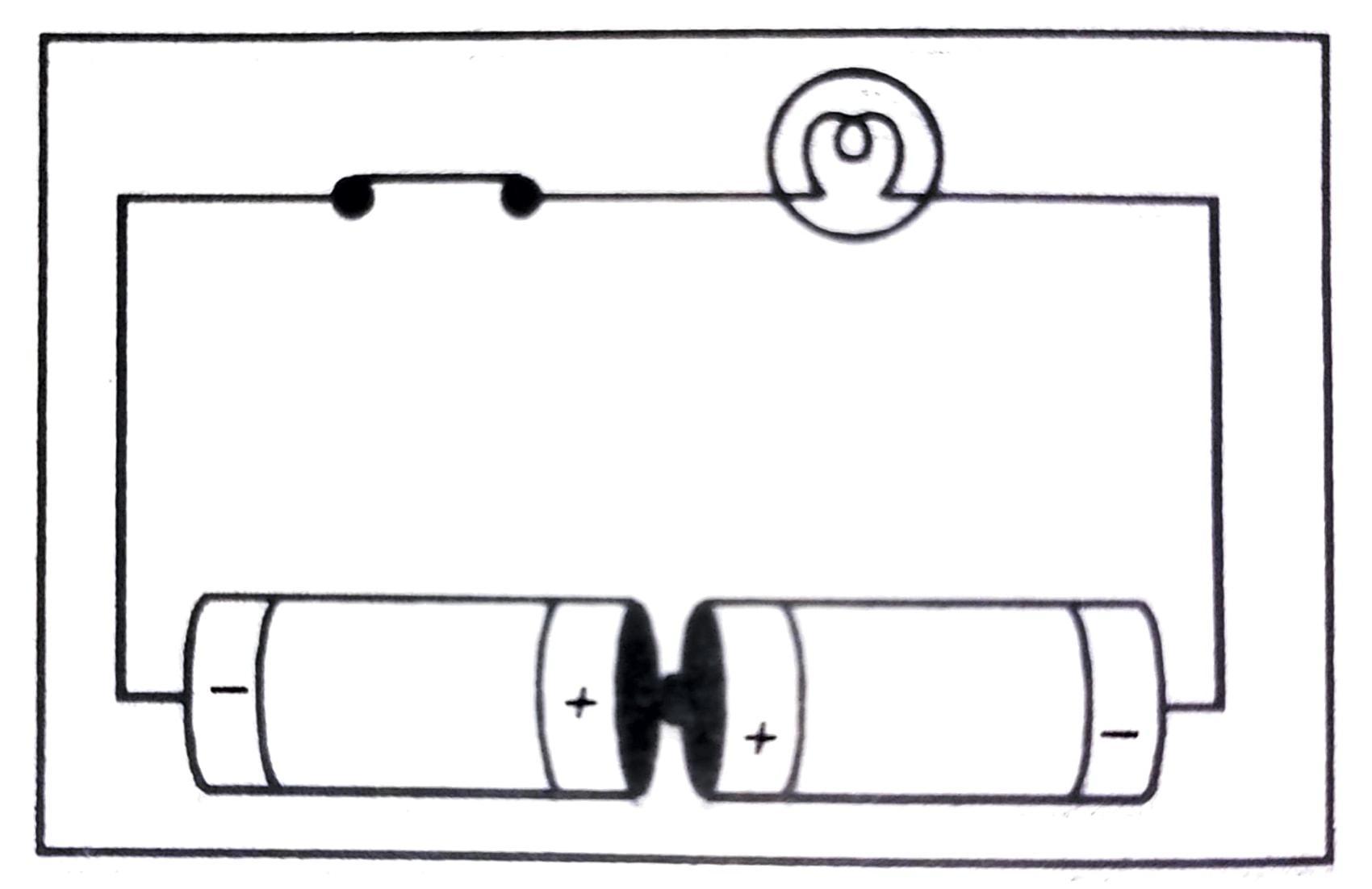
Fig. 14. 25.
Ans: Problem in this circuit is the combination of two cells. In the circuit positive terminal of one cell should be connected with negative terminal of other to make the bulb glow.
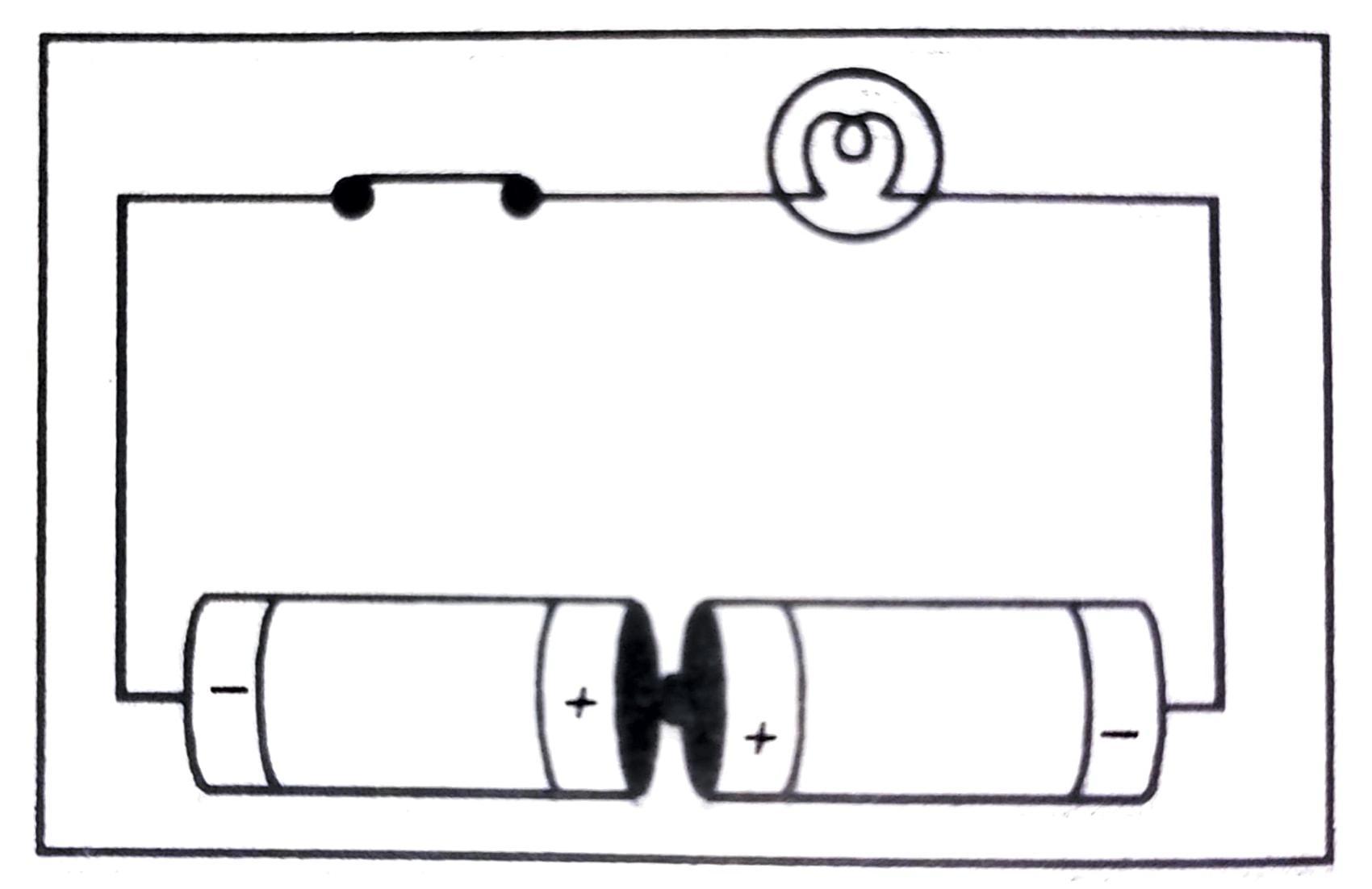
Fig. 14. 26.
Q. 5. Name any two effects currents.
Ans: Electric current has the following effect:
(i) Electric current can give rise to heating and lighting.
(ii) Electric current can make a straight conductor, a temporary magnet.
Q. 6. When the current is ‘switched on through a wire, a compass needle kept nearby gets deflected from its north-south position. Explain.
Ans: When current is passed through the wire, it deflects the compass near it from its north-south position behaving like a magnet. This is called magnetic effect of the current. As we know that needle of the compass is made up of a thin magnet, when this needle comes in contact with another magnet the like poles of the magnet repel each other and opposite poles attract each other. So the deflection is seen in the needle. In this case the wire behaves like a magnet and cause deflection in needle of the compass.
Q. 7. Will the compass needle show deflection when the switch in the circuit shown by Fig. 14.27 is closed?
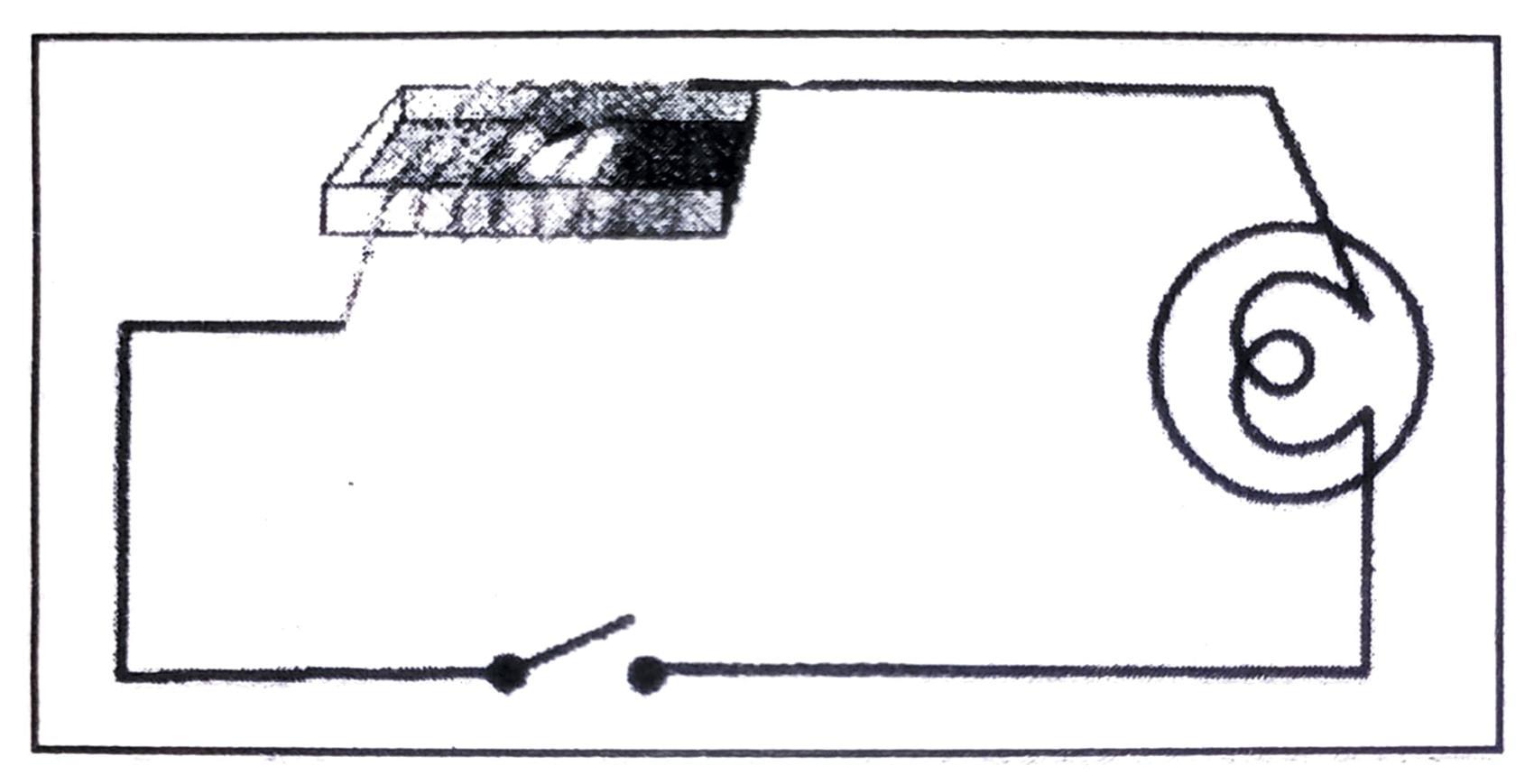
Fig. 14.27
Ans: No, because there is no source of electric current in this circuit i.e. there is no battery.
Q. 8. Fill in the blanks:
(a) Longer line in the symbols for a cell represents its _________ terminal.
Ans: Positive.
(b) The combination of two or more cells is called a _________.
Ans: Battery.
(c) When current is switched ‘on’ in a room heater, its _________.
Ans: Element becomes red hot and emits heat.
(d) The safety device based on the heating effect of electric current is called a _________.
Ans: Fuse.
Q. 9. Mark T if the statement is true and ‘F’ if it is false.
(a) To make a battery of two cells, the negative terminal of one cell is connected to the negative terminal of the other cell.
Ans: False.
(b) When the electric current through the fuse exceeds a certain limit, the fuse wire melts and breaks.
Ans: True.
(c) An electromagnet does not attract a piece of iron.
Ans: False.
(d) An electric bell has an electromagnet.
Ans: True.
Q. 10. Do you think an electromagnet can be used for separating plastic bags from a garbage heap? Explain.
Ans: No, the plastic bags do not get attracted by the magnet, so they cannot be separated by an electromagnet. Plastic bags are not magnetic materials, only magnetic materials like iron can be attracted by the magnet.
Q.11. An electrician is carrying out some repairs in your house. He wants to replace a fuse by a piece of a wire. Would you agree? Give reasons for your response.
Ans: No, we would not agree to allow to replace the fuse by a wire. Wires in the fuses are of specific melting points. So we should. always use ISI marked fuses in our houses to save short circuits.
Q. 12, Zubeda made an electric circuit using a cell holder shown in Fig. 14.28, a switch and a bulb. When she put the switch in the ‘ON’ position, the bulb did not glow. Help Zubeda in identifying the possible defects in the circuit.
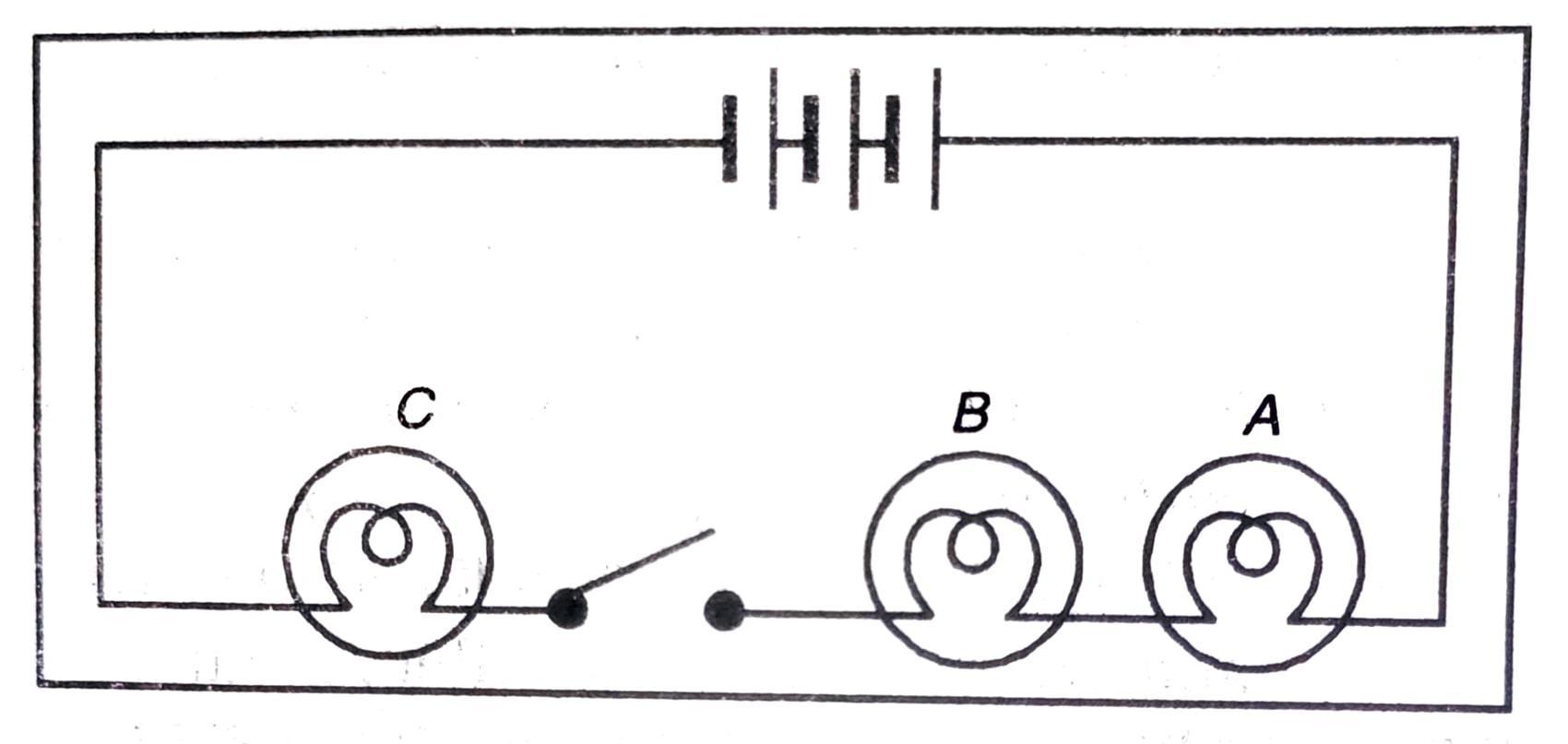
Fig. 14. 28.
Ans: It is important to put the cells in right series. The positive terminal of cell should be connected with negative terminal of the second cell. The switch should be closed properly and bulb should not be fused. If Zubeda will check these then the bulb will certainly glow.
Q1: What are the main effects of electric current?
The two main effects of electric current are the heating effect (used in electric heaters, bulbs, and fuses) and the magnetic effect (used in electromagnets, motors, and solenoids).
Q2: How does an electromagnet work?
An electromagnet is created by passing electric current through a coil wrapped around an iron core, making it magnetized temporarily. It is used in electric bells, motors, and cranes.
Q3: Why is a fuse important in an electrical circuit?
A fuse is a safety device that prevents excessive current flow in a circuit. It melts and breaks the circuit when the current is too high, protecting appliances from damage.
Q4: Where can I find Class 7 Science Chapter 5 solutions for SEBA Assam?
You can find detailed textbook solutions, MCQs, and explanations for SEBA Assam Class 7 Science Chapter 5 (Part II) on this page.
Q5: Where can I find solutions for all Class 7 Science chapters?
To get solutions for all Class 7 Science chapters, Click Here
